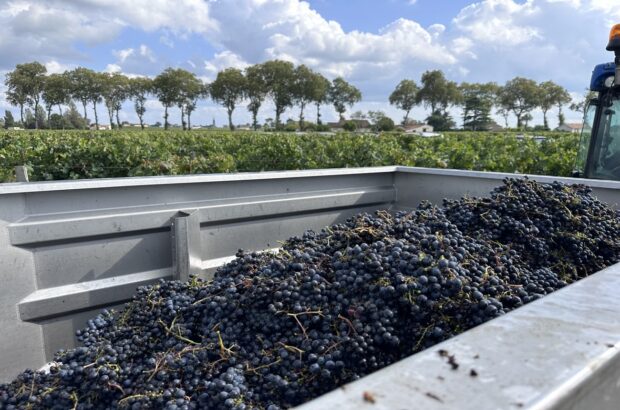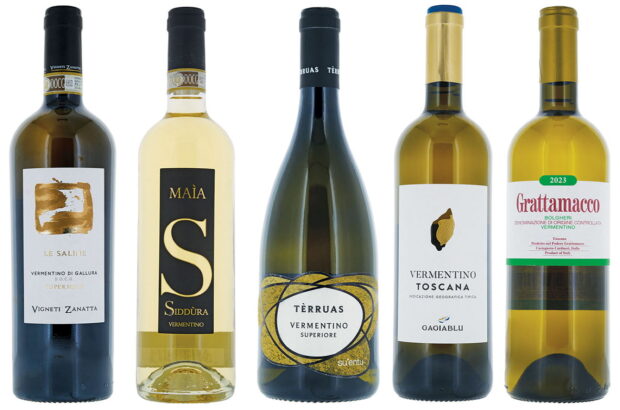Rioja is such a well-known, well-loved wine that it’s easy to take the kind of food you pair it with for granted – the assumption being that it will be red wine and that lamb will top the list.
Nothing wrong there, of course. No one who’s been to the region and feasted on those absolutely delectable, sweet, smoky lamb cutlets cooked over an open fire of vine cuttings would disagree. But there’s a lot more to Rioja than that. The fact that it comes in more than one colour, for a start.
Diverse reds
First, let’s dig a bit deeper into what you could pair with a red Rioja, depending on price and style. As you probably know, the classification system – crianza, reserva and gran reserva – is indicative of age. But these days that isn’t the whole story. Gran reservas are more vibrant and intense than they once were, so the recommendation to drink them with feathered game, for example, might seem misplaced. Mind you, Rioja does age well – so with older vintages that’s still good advice.
Many Riojas though, and not just the young ones, are made in a much bolder, more fruit-forward style that make them perhaps better suited to cuisines other than Spanish. Even more so when the dominant grape is Graciano rather than Tempranillo, which lends an exotic edge to a wine that I always think goes particularly well with Middle Eastern food.
I’ve also found that younger, more fruit-forward styles of red Rioja go really well with warmer curries such as a rogan josh or a lamb raan (marinated roast leg of lamb), or with a chilli or punchy Korean barbecue dishes. If that sounds improbable, think how many Spanish dishes contain the smoked red pepper seasoning pimentón or spicy chorizo.
Any red Rioja you pair with pimentón or ground red chilli will also work on the other side of Europe with dishes made from paprika – goulash, for example. Rioja is also a great partner for Middle Eastern and North African spices, including cumin, coriander and saffron. A reserva or crianza is a good wine to drink with a tagine – even, perhaps surprisingly, a chicken tagine with olives and preserved lemons.

Lamb rogan josh. Credit: Maja Smend
On the pulse
Pulses are another good avenue to explore – think of those hearty Spanish dishes of pork and beans or chickpeas such as fabada or cocido. If it works in Spain, why not with French food too? A young crianza would go just fine with a cassoulet or a hearty dish of Toulouse sausage and lentils.
In terms of veggies, both red and green peppers – and combinations of the two – pair particularly well with red Rioja. Especially in dishes that also include eggs. Indeed, wine columnist Victoria Moore even has a book on wine pairing called Fried Eggs and Rioja. If you feel robust enough to drink Rioja for brunch, it’s brilliant with the North African dish shakshuka: eggs cooked in a spicy tomato sauce with roasted red peppers.
What Tempranillo as a grape variety has going for it – and the characteristic that accounts for its popularity and versatility – is an appealing roundness and lack of angular tannins. This makes it a good companion for a cheese board. Manchego and other hard cheeses work especially well, but a reserva – and I particularly like a reserva with a cheese board – can handle most cheeses, including blues.
Tempranillo is also an easygoing companion for classic British pub dishes such as sausages and mash or steak pie. It’s great with gravy (a compliment in British terms) and also with that fashionable, intensely sticky dish of slow-cooked ox cheek.
You don’t need to buy expensive bottles to enjoy it, either. An inexpensive young Rioja is one of the easiest reds to enjoy on its own or with a simple tapa such as chorizo or mushrooms.
Versatile whites
Rioja’s white wines work well with a range of dishes and cuisine types, too. When it’s young, unoaked and crisp you can drink white Rioja with almost any kind of salad or seafood dish – from anchovies to fish tacos. But for me, it’s when it’s oaked that white Rioja is at its most rewarding, making a more affordable alternative to white Burgundy.
Try it with full-flavoured fish such as hake (especially served with garlic chips as they do in Spain) or salt cod. It can stand up to robust pork, veal, chicken and even lamb dishes, and can easily carry you through a vegetarian or even vegan meal: it’s really good with a whole roast celeriac or cauliflower, for example.
Oaked white Rioja is also perfect with robust, full-flavoured salads made from kale, roasted butternut squash, red peppers (again) and anchovies. In their food-and-wine-pairing book What Wine When, Bert Blaize and Claire Strickett recommend pairing it with a caesar salad – a combination I can absolutely see working.

Roasted butternut squash and kale salad
Gastronomic pinks
The same claim can be made for Rioja’s rosado wines, which are more structured and savoury than many rosés on the market, making them a natural pairing for a barbecue. Rioja rosado also goes exceptionally well with Spanish rice dishes: the classic paella, obviously, although there are arguments among chefs about what exactly constitutes a classic paella. Arguments aside, rosado will go with many variations of paella – with pork, fish or shellfish. And if paella, why not other rice dishes? I’d happily drink a Rioja rosado with a biryani or a pilaf.
The aged style of rosado, of which R López de Heredia’s Viña Tondonia Gran Reserva is perhaps the best-known example, can be magnificent with grilled lobster. Amazingly, raw shellfish can work too, as I discovered in the Peruvian restaurant Lima in London, where the sommelier matched a dish of raw scallops with tiger’s milk (spicy citrus marinade) and passion fruit (much nicer than it sounds) with Ramón Bilbao’s top-end gastronomic Lalomba Rosado.
So while I definitely wouldn’t want to discourage you from enjoying a nice bottle of Rioja with your Sunday roast or your cheeseboard, there are many more possibilities
– and, hopefully, surprises – in store when it comes to pairing food with Rioja wines.
My favourite Rioja food pairings
Sommeliers and restaurateurs share their favourite matches
Will Clarke, assistant head sommelier, The Pig in the South Downs, West Sussex
‘The Remelluri, Reserva 2009 alongside a tomahawk pork chop with roasted carrots and a wholegrain mustard sauce. This was a fantastic vintage in Rioja and this example from Remelluri is super impressive: a combination of the red and black fruit flavours and herbs, with mushroom, tobacco and vanilla, makes for a great dining experience. I may also save a glass for some fine semi-soft smoked cheese at the end of the meal!’
Owen Morgan, owner, Bar 44, Bristol, Cardiff and Penarth
‘A sensational pairing for me is José Gil, Viñedos en San Vicente de la Sonsierra 2021 with a fire-cooked meaty monkfish tail, served with escalivada, a Spanish roasted vegetable side dish full of freshness but with a lick of smoke. This blend of Tempranillo, Garnacha and Viura, aged in Shumana Palit concrete and old French oak, is a hedonistic Riojan and Burgundian expression of silky complexity.
Johnny Murphy, sommelier, Noble Rot, London
‘One of my favourite pairings from last year was R López de Heredia, Viña Tondonia Reserva 2011 with a venison carpaccio. The black-fruited and gently spiced profile of the wine works incredibly well with the gamey sweetness of the dish. Most importantly, there is enough acidity to cut through the richness, making for a vibrant match.’
Shumana Palit, owner, Ultracomida, Narberth and Aberystwyth
‘Muga, Flor de Muga Rosado paired with my grandmother’s recipe for a proper Bengali chicken korma. The dish is very rich, full of ghee and yoghurt, and the spicing (fennel, cinnamon and bayleaf) is gentle and aromatic with slowly cooked garlic that has cooked its way into the meat. The soft, fresh acidity of the wine has just the right level of acidity to balance out the richness, refreshing the palate and adding a welcome lightness.’

Shumana Palit. Credit: Walesonline / Gayle Marsh












